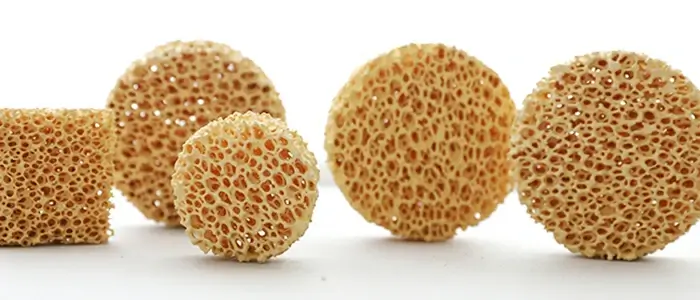When most people hear “ceramics,” they think of coffee mugs and bathroom tiles. But in my years of working with advanced materials, I’ve learned that the real story of ceramics is happening not in the kitchen, but in jet engines, semiconductor fabs, and operating rooms.
These are Advanced Ceramics—engineered materials designed to perform under extreme conditions where metals and plastics fail. They are the invisible, unsung heroes of modern technology.
So, what are the industrial uses of ceramics that make them so indispensable? Let’s explore the five key sectors where these materials are making a tangible difference.
Aerospace & Defense: Mastering Extreme Environments
In aerospace, failure is not an option. This is where high-performance ceramic components prove their worth.
- Thermal Barrier Coatings (TBCs): Inside a jet engine, temperatures can exceed the melting point of superalloys. A thin layer of ceramic TBC acts as a heat shield, allowing engines to run hotter, more efficiently, and for longer.
- Transparent Armor: Materials like Aluminum Oxynitride (ALON) create transparent armor that is lighter and offers far better ballistic protection than traditional glass, safeguarding lives in vehicles and aircraft.
Electronics & IT: The Heart of Your Devices
Every smart device you own relies on ceramics. Their role in electronic ceramic applications is absolutely fundamental.
- Semiconductor Manufacturing: The process of making microchips involves extreme precision and cleanliness. Ceramic components are used throughout this process due to their purity, stability, and excellent electrical insulation.
- Multilayer Ceramic Capacitors (MLCCs): Your smartphone contains hundreds of these tiny components. They are essential for managing power and signal integrity, and without them, modern electronics simply wouldn’t function.

Industrial Manufacturing & Metalcasting: The Unsung Heroes
This is where I’ve seen ceramics deliver some of the most direct and dramatic ROI. Beyond cutting tools and abrasives, one of the most critical yet overlooked applications is molten metal filtration.
- Ceramic Foam Filters: In foundries producing everything from automotive engine blocks to aerospace components, ceramic foam filters are the final quality checkpoint. As a porous ceramic structure placed in the mold runner, they expertly trap non-metallic inclusions like slag and oxides from molten aluminum, iron, or steel.
- The Impact: From my conversations with foundry engineers, the consistent use of high-quality filters translates directly to higher casting yield, fewer defects, and improved mechanical properties in the final product. It’s a perfect example of a ceramic component that is both simple in concept and sophisticated in its execution, saving manufacturers significant costs in scrap and rework.
Medical Technology: Engineering for the Human Body
Biocompatibility is paramount for medical implants, and certain advanced ceramics are perfectly suited for the task.
Orthopedic & Dental Implants: Zirconia ceramics have revolutionized dental crowns and implants due to their exceptional strength, wear resistance, and ability to be color-matched to natural teeth. Similarly, alumina and zirconia are used in hip and knee replacements for their longevity and biocompatibility.
Automotive Engineering: Driving Efficiency
The push for cleaner, more efficient vehicles relies heavily on technical ceramics.
- Catalytic Converter Substrates: The honeycomb core inside your car’s catalytic converter is a ceramic material that provides a massive surface area to convert harmful exhaust gases into less harmful emissions.
- Sensors: Ceramic oxygen sensors are critical for monitoring engine exhaust in real-time, ensuring optimal fuel combustion and reducing pollution.
Conclusion
The question isn’t just “What are the industrial uses of ceramics?” but rather, “Where aren’t they used?” From ensuring the integrity of a jet engine blade to the purity of molten metal in a casting, and the functionality of the phone in your pocket, advanced industrial ceramics are a cornerstone of modern engineering.
As technology continues to demand more from materials—higher temperatures, greater wear resistance, and smarter functionalities—the role of these versatile materials will only continue to expand.

